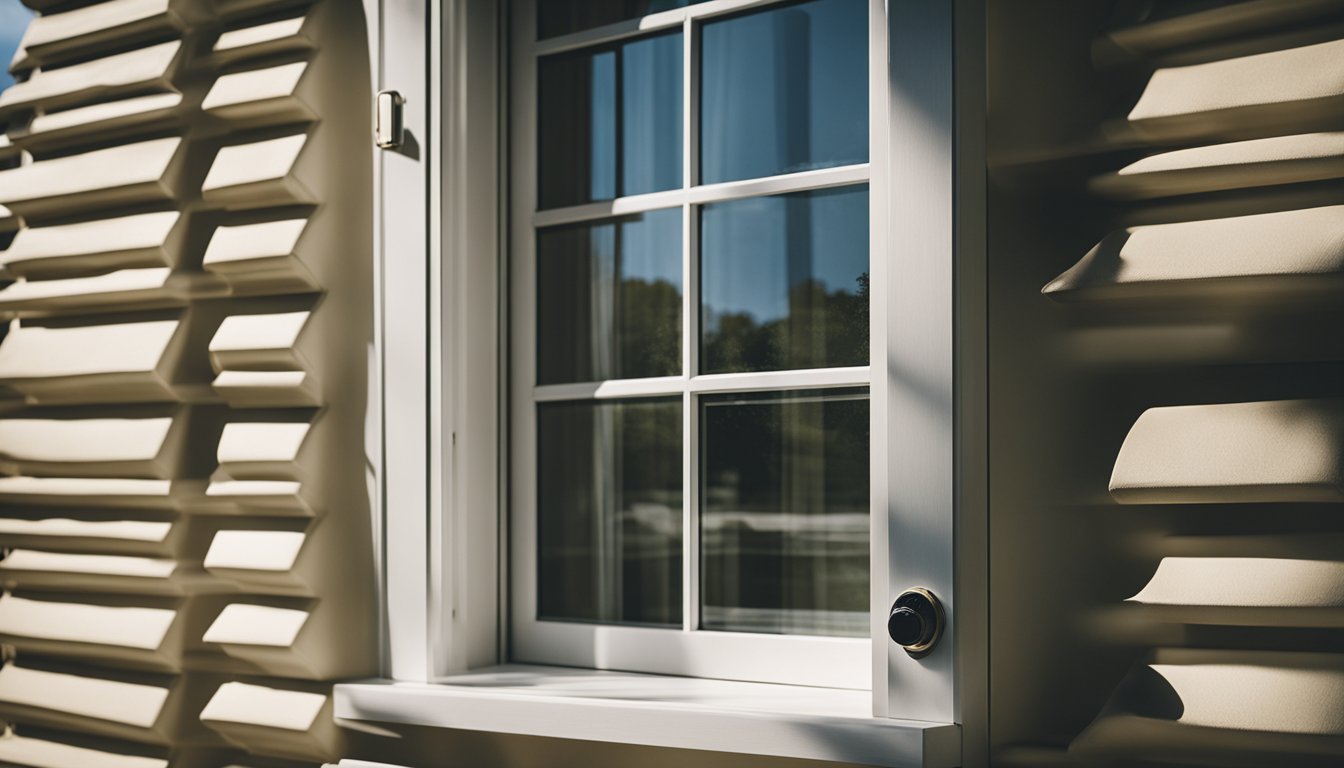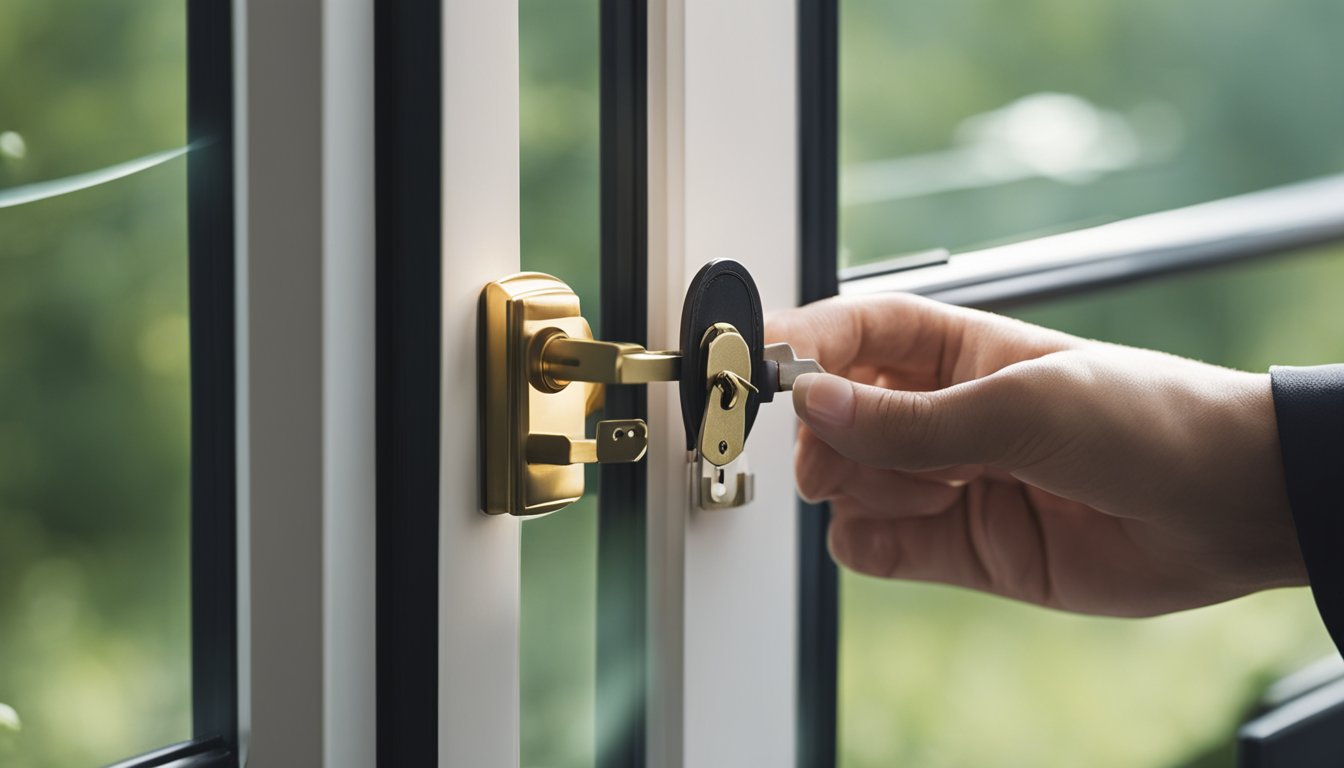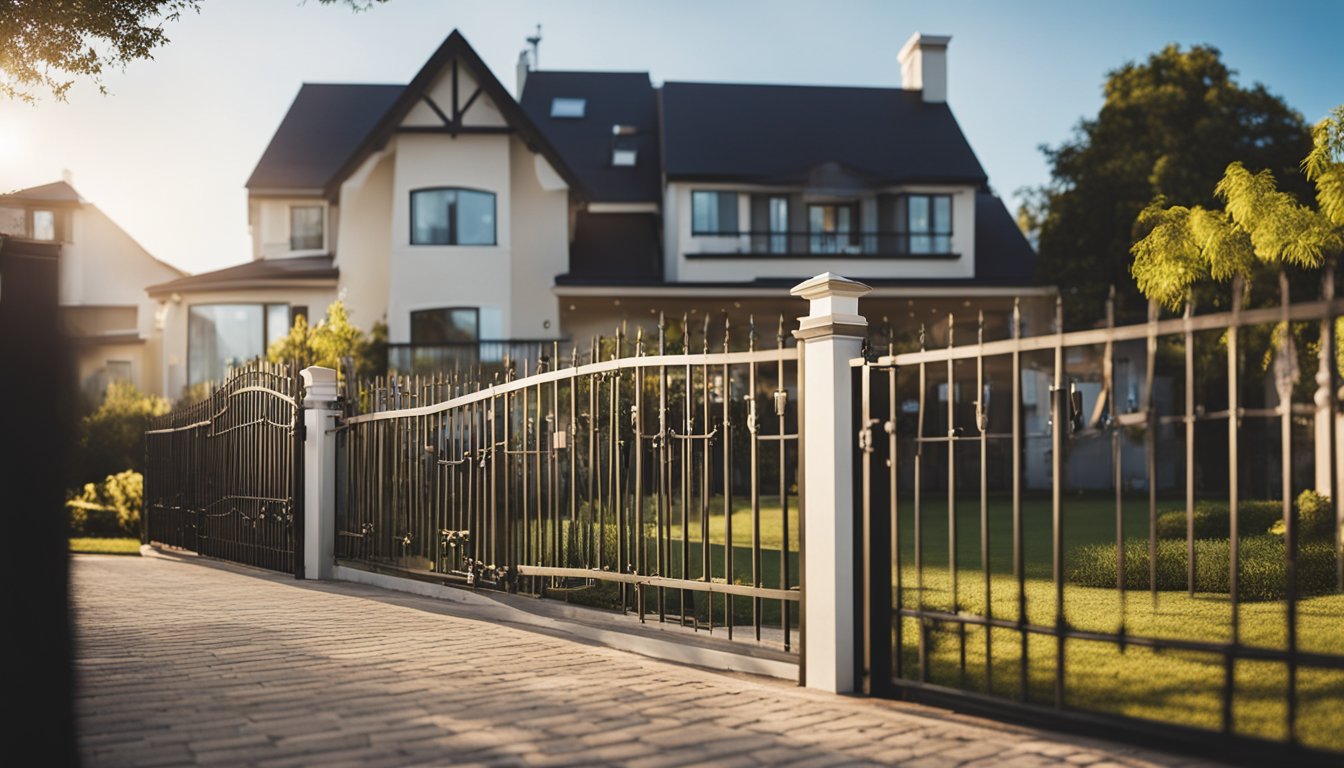Late updated: 09 Jul 2024 14:07
Written by: Elena Prescott
Improving Home Security With Window Locks: Essential Tips for Safety
Windows often represent the most vulnerable entry points in our homes, making them prime targets for intruders. By focusing on improving window security, we can significantly enhance the overall safety of our properties. A fundamental approach involves reinforcing window locks, which act as a primary line of defence against unauthorised access.

There are various types of locks available, such as keyed locks that offer robust security and require a key to operate, making it difficult for intruders to tamper with them. Additionally, upgrading to smart locks or deadbolt locks can provide even more resistance to forced entry attempts, offering homeowners peace of mind.
To further bolster window security, combining locks with other measures such as security films can help protect the glass from breaking. These films add an extra layer of protection, deterring criminals who might otherwise break the glass to gain entry. By employing these strategies, we can create a more secure living environment for ourselves and our loved ones.
Key Takeaways
- Window locks are essential for home security
- Keyed and smart locks provide robust protection
- Security films protect window glass from breaking
Understanding Window Security Essentials

To effectively improve home security, it is crucial to assess vulnerable window types, review current locking mechanisms, and reinforce windows against forced entry. These steps will help safeguard against potential break-ins and enhance overall safety.
Identifying Vulnerable Window Types
Different types of windows present unique security challenges. Double-hung windows are particularly vulnerable as they can be easily jimmied if not properly locked. Casement windows, which open outwards via a crank mechanism, are somewhat more secure but can still be a weak point if the crank system is compromised.
Sliding windows are another susceptible type due to their horizontal movement, which can often be exploited with force. Basement windows, being low to the ground, are prime targets for intruders. Special care must be taken to evaluate which types of windows in your home are most vulnerable.
Assessing Current Window Lock Mechanisms
Evaluating existing window lock mechanisms is essential. Standard locks, such as sash locks on double-hung windows, provide basic security but may not be sufficient against determined intruders. Keyed locks offer a higher level of security, requiring a key to operate and thus reducing the risk of intrusion.
Sliding window locks add another layer of protection for horizontally moving windows. It is important to ensure these locks are robust and tamper-resistant. We should also consider incorporating window sensors into our security system to alert us to any forced entry attempts.
Reinforcing Windows Against Forced Entry
Reinforcement strategies can significantly reduce the risk of forced entry. Security film or laminated glass can be applied to windows to make the glass more resistant to shattering. This can delay or deter intruders who try to break in through the glass.
Additionally, installing window bars can provide a physical barrier against break-ins, especially for basement windows. Tamper-resistant designs and anti-lift mechanisms for sliding windows prevent these windows from being easily lifted out of their tracks.
A combination of these methods will enhance window security, creating a strong line of defence against potential intrusions. Let's prioritise setting up a robust window security system to ensure the safety and security of our homes.
Implementing Advanced Security Upgrades
Enhancing window security is a crucial aspect of safeguarding our homes. Advanced security upgrades can effectively deter burglars and increase our property’s overall safety.
Integrating Windows into Home Security Systems
Integrating window security into our home security systems offers comprehensive protection. By connecting window locks with security systems, we can monitor and control window access from our smartphones. This integration often includes window alarms, glass break sensors, and entry sensors.
Having these features linked to an alarm system ensures immediate alerts in case of unauthorised access attempts. Additionally, security cameras focused on windows provide visual verification, further enhancing security. Motion sensors placed near windows can trigger floodlights, deterring intruders before they attempt entry. Embracing this technology significantly upgrades our window security.
Selecting and Installing High-Security Window Locks
Choosing the right high-security window locks is essential for protecting our homes. Several types of window locks are designed to withstand forced entry. Deadbolts, hinged wedge locks, and pin locks are some of the most effective options.
When installing these locks, it’s crucial to ensure they fit securely and function properly. Opt for locks made from durable materials, such as hardened steel, which resist tampering. Installation should be done carefully, following manufacturer instructions or seeking professional assistance. Properly installed, these locks provide a robust barrier against burglars, increasing our home's security and peace of mind.
Enhancing Security with Supplementary Measures
Beyond window locks, supplementary measures can vastly improve security. Outdoor lighting, such as floodlights with motion sensors, illuminates potential entry points, scaring off would-be intruders. Strategic landscaping can also be an effective deterrent. Plants with thorns or dense bushes placed near windows can make access difficult and unappealing to burglars.
Window security can be further enhanced with visual deterrents like security signs and stickers. These indicate the presence of a security system, dissuading burglars from attempting a break-in. Additionally, installing window bars or grilles adds another physical barrier, making access even more challenging. By combining these measures, we create a more comprehensive and burglar-proof home security setup.
Frequently Asked Questions

Addressing the common concerns about window locks can help homeowners make informed decisions. By understanding the various options and their effectiveness, we can better protect our homes.
How can one enhance the security of windows from the inside?
Installing keyed locks is a robust option. These locks require a key to open from the inside, adding an extra layer of security.
We can also use pin locks which prevent sash windows from being lifted.
What are the benefits of window security film?
Applying window security film strengthens glass panes. It makes breaking the glass much harder, reducing the likelihood of shattering. This additional barrier can delay or even prevent entry, giving us more time to react.
In what ways can homeowners fortify their windows against break-ins?
Adding secondary locks like hinged wedge locks can prevent double-hung windows from being opened in either direction.
Pin locks also offer an inexpensive method to enhance security. Furthermore, installing window bars provides a physical barrier that deters potential intruders.
Which are the most secure window models available for residential properties?
We recommend windows with built-in multi-point locking systems.
Double-glazed windows with toughened glass provide better resistance against forced entry. Some windows also come with reinforced frames for additional security.
How effective are window security bars in preventing unauthorised entry?
Window security bars are highly effective. They act as a physical deterrent, making it significantly harder for intruders to gain entry. These bars come in various designs, ensuring they can be both functional and aesthetically pleasing.
Are specialised locks for sliding windows reliable in deterring burglars?
Specialised locks for sliding windows, such as track locks and lever locks, are reliable. They prevent the window from being forced open from the outside.
For added security, placing a rod in the track can further prevent sliding windows from being moved.
